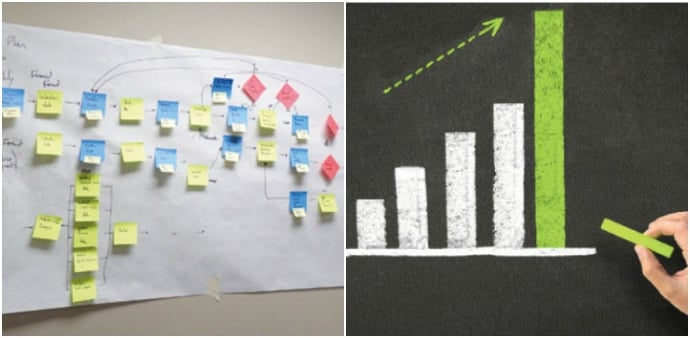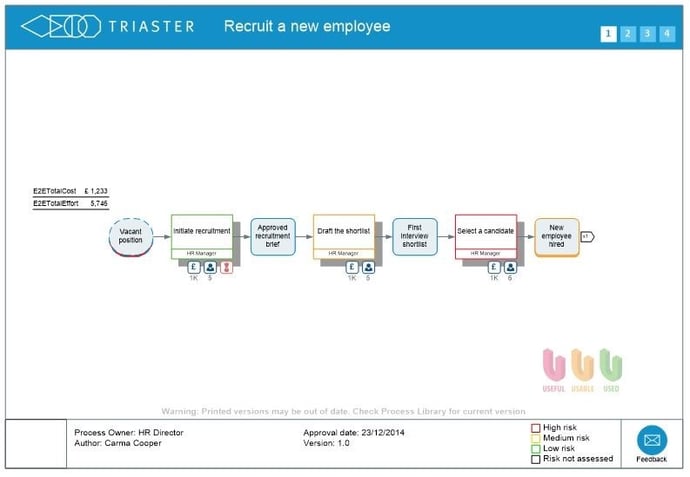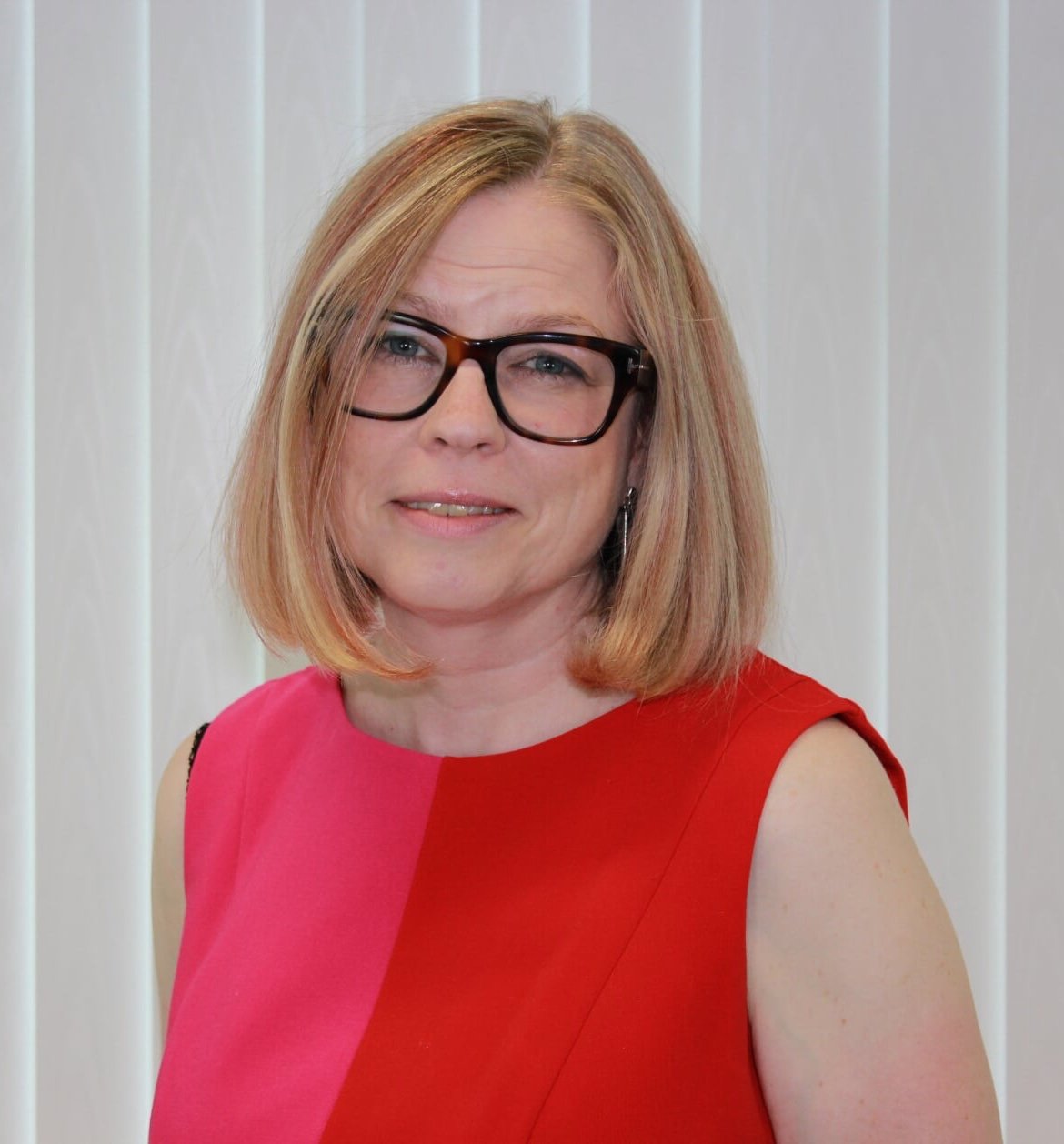When looking at Business Process Mapping Software, the expected return on investment (ROI) is absolutely central to our decision to buy any software. We want to be confident of a substantial return on both the cost of the software and all the time spent using it.
What’s more, we probably need to quantify the expected return in order to secure budget for the software purchase and the project that it is to be used for.
There is no dispute that process mapping is one of the pivotal BPM tools, central to any improvement initiative, but you shouldn't just look for a process mapping tool, you should be looking to find software that offers the best return on investment for your Process Mapping projects - here's how to do just that...
Firstly, let’s look at where the return on investment could come from.
Benefits deriving from Process Mapping
As anyone looking to purchase process mapping software is probably aware, there are significant benefits to be derived from process mapping.

The specific benefits derived from Business Process Mapping Software will depend on the specific objective that you are looking to achieve. However, underpinning the whole exercise will be the documentation of how your organisation (or a part of it) transforms its input into outputs in order to understand this better.
If you would like a full report on how process mapping can help find out your inefficiencies by capturing time, effort and cost data in your organisation then please....
The Benefits of Business Process Mapping Software
This is the start point from which a whole heap of benefits are derived, for example:
- To eliminate a single point of failure
- To support the restructure of the organisation
- To enable business transformation or change
- To enable return to business-as-usual following a merger or acquisition
- In order to implement Lean or continual improvement
- To deliver on cost saving initiatives
- To support business and IT alignment
- To ensure knowledge retention
- For process control
- For risk management
- As a mechanism for increasing revenue
- As a mechanism for reducing waste
- As a mechanism for improving quality
For more on the benefits of Process Mapping please see the following articles:
Process Mapping: Who does it and why?
Six Major Benefits of Process Mapping
What are the key Business Objectives for mapping & managing processes?
Easy to use Business Process Mapping software
Whatever you are setting out to achieve, the Business Process Mapping Software purchased must be an easy to use BPM tool. Its purpose is to enable you to capture and document your processes and the software for process mapping should make this as easy as possible.

The easier the software is to use, both in the initial capture of the processes and in subsequent update of the process maps, the better the return on investment. This is for a number of reasons:
The easier the mapping software is to use:
- The less time is needed to do the process mapping
- The greater the amount of the time and attention that will be given to the accuracy of the processes captured and the objectives of the project, rather than the nuts and bolts of process mapping
- The more non-expert process mappers can be involved.
Basically, Process Mapping software makes it easier to capture the process as-is accurately and quickly.
Involve the people who do the work
This is key to achieving return on investment from process mapping. The documentation of how your organisation works will only enable better understanding, if the documentation is accurate and captures what really happens. And the best way to do this is to involve the people who do the process day in, day out. The process experts.
Involving the process experts can be done in two ways:
- Hold a process capture workshop and capture the information about what they do on sticky notes and brown page and then document it as process maps using the software.
- Train the process experts to use the process mapping software and map their own processes.
Even with really easy to use process mapping software, sometimes you may want to go with the first option as those capturing their processes as maps for the first time often struggle with the concept – but certainly make sure that the ease of use of the software isn’t the inhibiting factor.
For more on this please read the articles:
5 Business Process Mapping Tips for Getting Your Entire Team Involved
How To Process Map: A Tutorial (Video)
Capture the data for Return on Investment
Your process maps will deliver the best return on investment if they capture a model of your organisation. This model should include not only a diagrammatic view of what is done, but also the data behind the processes.
With this AS-IS captured, you have the ability to model various potential changes to the processes and see which of your TO-BE options actually deliver the improvements that you need.
Simulating improvements and calculating the effect on time, costs etc delivers excellent return on investment, particularly if your objective is cost savings.

Image sourced from: i.ytimg.com
For more detail on this please read:
How Can a BPM System Help Me Achieve Continuous Improvement?
Use the Process Maps
Modelling potential improvements is a powerful way to achieve ROI on process mapping. However it is not the only one. What is absolutely key to achieving return on investment with your process mapping tool is that the process maps are used.
To enable this, process maps must be intelligently and intuitively made available for use. This means they must be:
- Easy to find
- Easy to search
- Easy to follow
- Easy to report on
- Accurate
- Up to date
So make sure that this is what your process mapping tool delivers as standard.
For more on this please read the article:
How to Make Sure Your Process Maps Get Used: 5 Tips for Success
Secure Stakeholder Support for the process mapping project
So, as we have stated, in order to maximise the return on investment in process mapping software you must:
- Involve the people who do the processes
- Capture the data
- Ensure that the resulting process maps can and will be used
All of this will have a wide impact across your organisation. You will need time and information from those people whose processes are within the scope of the project. Without this however, your project will not achieve its objectives and not achieve the best return on investment.
So one of the key requirements for maximising your return on investment in process mapping is to ensure stakeholder buy in.

Image sourced from: cdn.lineshapespace.com
For more information on gaining stakeholder support, please read:
Problems with Business Process Management: Stakeholder Buy In
How to Choose the Best Software for Process Mapping
The Triaster platform delivers incredibly easy to use process mapping tool and easy to understand, easy to use, secure websites, intelligently presenting all processes, policies, forms and guidance documents. We call these Process Libraries.
We know that the Triaster platform won’t suit everyone, but if you are interested in learning more about our Process libraries, have a look at one here: Process Library
Alternatively, if you would like some other options for process mapping software, then take a look at this comparison of Lucid Chart, Microsoft Visio, Edraw and ConceptDraw.
You may also just like to download our free process mapping report below which explains in further detail how process mapping can solve the problems of process inefficiency in your workplace...
Related articles
Process Mapping: Who does it and why?
Six Major Benefits of Process Mapping
What are the key Business Objectives for mapping & managing processes?
5 Business Process Mapping Tips for Getting Your Entire Team Involved
Written by Emma Harris
Emma was Operations Director for Triaster for nearly 20 years, during which time as well as learning and perfecting her BPM and process improvement skills, she honed her inbound marketing expertise. She now runs D2e - Designed to engage - which designs and develops bespoke, engaging, HubSpot CMS websites, that help your entire company to grow and scale. She is delighted to still be delivering Triaster's marketing, whilst also helping other companies turn their websites into their hardest working asset.


